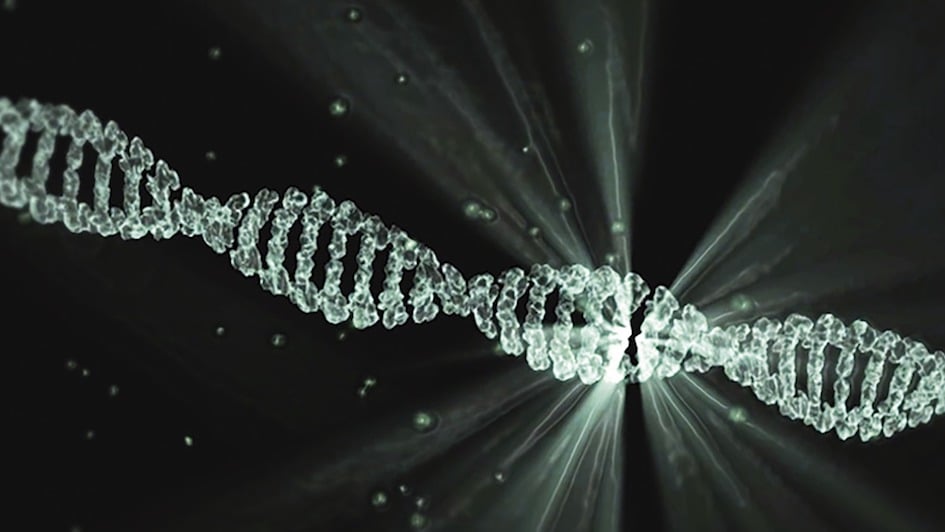
Twenty years ago today, the International Genome Sequencing Consortium published the first detailed analysis of the human genome. The paper appeared online in Nature on 15 February 2001, followed by a special issue published in Science. This was a huge step forward for the Human Genome Project, regarded by many as biology's moon shot.
"The draft human genome, followed by thousands of others, has had a huge impact on biology and medicine. The impact has been especially great in cancer research, enabling us to understand the fundamental nature of what goes wrong to cause cancer and helping us to discover innovative precision medicines," says Professor Paul Workman, Chief Executive of the ICR.
Sequencing the entire human genome – which essentially means uncovering all of the genetic material in a person: a complete set of DNA instructions – was no mean feat. In humans, that includes 23 pairs of chromosomes, containing around 20-25,000 genes, made up of approximately 3 billion base pairs of DNA.
Scientists knew this genetic data would reveal important information regarding how genes are organised and how they function – providing vital insights to help us fight diseases like cancer.
Most diseases are linked to mutations – alterations to our DNA. These diseases can be ‘Mendelian’ diseases like cystic fibrosis – resulting from mutations in a single gene – or they can be ‘complex and common’ disorders like Alzheimer’s – which result from changes in multiple genes.
Cancer is also a complex and common disease – in fact, it’s the most common human genetic disease, and it results from genetic changes that encourage cells to divide uncontrollably.
Find out how we're using genomics technologies in our research.
Find out more
The impact of the Human Genome Project
With all of this new and powerful genetic information, scientists were hoping to develop a new approach to understanding human diseases and, eventually, to preventing and treating them.
Understanding the genome requires knowing its different parts, how they interact, and what their functions are. Uncovering the human genome sequence was an important first step in the right direction, helping us categorise each part of each human gene – as well as the non-coding genetic material, which is also important and can act as a regulatory element, helping to turn genes on and off.
This vast amount of information provided evidence on genetic variations that can lead to disease or increase the risk of developing disease.
Today, we can sequence the DNA in cancer cells and compare that to the sequence found by the Human Genome Project. This allows scientists to work out which genes are mutated – improving our understanding of inherited diseases and even helping develop genetically targeted medicines.
That means that, when it comes to cancer, we can better categorise tumours by studying their genetic changes. This often helps us find better, more targeted treatments.
For example, patients with breast and ovarian cancer who have a mutation in specific genes called BRCA1 or BRCA2 respond very well to olaparib – the world's first cancer drug targeted against inherited genetic faults. This treatment option only works for patients with a mutation in DNA repair genes like BRCA1 or BRCA2 – so you can see why it’s important to know which genes are mutated in a tumour.
We identified the breast cancer gene BRCA2, which enabled families with a history of breast cancer to be assessed for future risk, and laid the groundwork for developing novel forms of therapy for BRCA-associated cancers.
Find out more
How it’s helping our research
Although mapping the human genome was a great achievement, scientists are still trying to make sense of a lot of the information they now have access to. The information gap is substantial – but thanks to research, we are getting closer to closing it.
“There are so many things about the human genome that are fascinating and continue to surprise and intrigue us,” says Professor Jessica Downs, Deputy Head of the Division of Cancer Biology and Team Leader in Epigenetics and Genome Stability at the ICR. “From the first publication of the human genome, we had a rich dataset that opened up wonderful new avenues for research. But the progress in genome sequencing since then has been striking.”
“Our research makes use of human genome sequences every day. Since the first human genome sequence was assembled and published, hundreds of thousands of human genomes have been sequenced.
“For example, we started working on the SWI/SNF chromatin remodelling complex around 20 years ago. We found that it was important for genome stability and DNA damage responses, and therefore we thought that it might play a role in preventing cancer. This complex consists of a group of proteins that help modify the way DNA is packaged.
“It was only through this largescale sequencing of human genomes that we realised how fundamentally important SWI/SNF is to cancer biology.
“It’s clear now that around 30 per cent of all human cancers have an alteration in the sequence of the genes encoding SWI/SNF. The original efforts to sequence the human genome and make it publicly accessible paved the way for these findings, and made an enormous contribution to our understanding of cancer.”

Image: Professor Jessica Downs
Transforming the way we diagnose and treat disease
Not only has our knowledge of the human genome’s sequence transformed our understanding of human diseases like cancer, but also our ability to treat it. We’re moving towards a medicine that is predictive, preventive and personalised.
Genomics had not entered the mainstream healthcare setting until very recently. Just over a decade ago, being able to sequence the genome of a patient with an unknown disease in order to achieve a diagnosis was uncommon. Now, it is a reality for many people, especially those who are suspected of having a rare genetic disease.
In fact, it could become routine in a not so distant future. Professor Ros Eeles, who is Professor of Oncogenetics at the ICR, leads the 90S Study together with a co-lead, Dr Michael Sandberg, Honorary Clinical Fellow at the ICR and General Practitioner. Their initiative looks at how genomic medicine could be integrated into primary care in the UK.
As part of the study, researchers will analyse the entire ‘germline’ genetic code of people attending a GP surgery and report on around 600 separate genetic changes known to be associated with a range of diseases, including cancer. Germline mutations are those that can be passed on from parent to offspring.
“Over the last quarter of a century, we’ve seen incredible progress in identifying genetic alterations that are linked to the risk of diseases like cancer, opening up the possibility to intervene early to improve patients’ health,” says Professor Ros Eeles.
“The aim of the 90S study is to use genetic screening as a practical way of picking up genes associated with cancer and other diseases, so that doctors can act sooner rather than later.
“The project, which is ongoing, will give us crucial information about whether genetic screening in primary care could be feasible, and how we should go about seeking to implement it within the NHS.”

Image: Professor Ros Eeles
Powering drug discovery
Another area that benefitted from the discovery of the human genome sequence is drug discovery. Knowledge of all the human genes and their functions created new opportunities for discovering and developing novel drugs, changing research strategy and how researchers approach drug discovery.
By being able to apply genomic technologies such as gene sequencing to drugs that are being developed, scientists can speed up the process by figuring out in a more efficient way whether certain drugs act on their target, while also gaining insights into drug metabolism.
“The Human Genome Project initiative and technologies were the engine that started up the international Cancer Genome projects enabling the mapping of the genomes of hundreds of thousands of cancer patients. Through this, we were able to rapidly uncover cancer driver genes, and to discover drugs for those, at unprecedented speeds,” says Professor Bissan Al-Lazikani, who leads the Computational Biology and Chemogenomics Team at the ICR.
For example, about half of all melanomas – a type of skin cancer – have genetic changes in the BRAF gene. The mutated BRAF protein helps these cancers grow. Being able to sequence the human genome was key to identifying drugs that are able to target this mutated protein. Another example is a targeted drug approved for Acute Myeloid Leukemia (AML), which targets IDH1 gene mutations.
“Importantly, having access to the human genome sequence and new genomic technologies is also vastly improving our ability to stratify patients for therapy and empower clinical trials to deliver new drugs to patients,” says Professor Al-Lazikani. “In fact, a study I co-led, which focused on analysing the mechanisms of action of all approved drugs, showed that oncology is the area where most innovation in new drugs has happened in the previous 10 years – which are the years that have benefitted from the data obtained from the Human Genome Project.”
We played a major role in characterising the BRAF gene and its role in cancer.
Find out more
Looking ahead
There is no denying that identifying and mapping all of the genes of the human genome has brought progress to many fields, especially cancer research. As we have seen, the international, collaborative research programme accomplished a great deal.
We can feel confident that genomics will play a key role in the next decade, helping scientists make even greater advances – who knows what the next era in genomics may have in store?